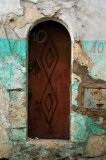Yiddishe Kop

by Fred Paddock
Many know that Rudolf Steiner felt that Judaism has even today a mission toward Christianity, namely, to spiritualize it. But what is hardly known at all is that this task was to be accomplished through teaching Yiddishe Kop!
You ask, what in the world is that? Yiddishe Kop is one of the great pearls to come out of Judaism—thanks to generations of Christian persecution. It is a way of thinking “outside the box,” a proclivity to observe reality with caution, to see many facets of reality rather than just the normal one, a way of “reframing” situations in new and surprising ways, a way of seeing amazing options where others see none, a capacity to see possibility where it seems like there is only impossibility.
A good illustration of Yiddishe Kop comes from the Middle Ages:
A child was found dead in a village. A Jew was immediately accused of committing the crime and of using the victim in some macabre ritual. Thrown in prison the man knew he was a scapegoat and stood no chance at the forthcoming trial. He asked to see a rabbi and was granted his request.
When the rabbi arrived, he found the man in despair over the death sentence that surely awaited him. The rabbi comforted him: “Don’t ever believe there is no way out. The Evil One, God forbid, will tempt you with that thought.”
“But what shall I do?” asked the anguished man.
“Just don’t give up, and you will be shown a way out.”
When the day of the trial arrived, the judge wanted to pretend that the accused would be allowed a fair trial and a chance to prove his innocence, so he said to the prisoner, “Since you Jews have faith, I will let the Lord decide this matter. On one piece of paper I will write the word ‘innocent’ and on another one, ‘guilty.’ You will pick one, and the Lord will decide your destiny.”
As the Jew guessed, the judge prepared two pieces of paper with the word “guilty” on both of them. Normally we would say that the chances of the accused had dropped from fifty to zero percent—there was no way he could select the piece of paper saying “innocent” since there was no such paper.
Recalling the rabbi’s words, the prisoner meditated for a moment. Suddenly his eyes lit up with a new spark. He grabbed one of the pieces of paper and swallowed it in a gulp. The witnesses were upset: “Why did you do that? How will we know your destiny now?”
“Easy,” answered the Jew, “Just read what it says on the other paper, and you will know that I chose the opposite.”
From this illustration, one can see how important it can be to be able at times to think with Yiddishe Kop. For anthroposophists to learn Yiddishe Kop would mean that we could think well not only within and according to the basic principles of anthroposophy, but also “outside the box” in new and surprising ways. We would become “lighter,” countering our proclivity toward heaviness—a tendency that even the library newsletter is not immune from. This lightness would extend into our conversation, which would become permeated with humor and unpredictability; it would leap, flash, and dart like fireflies. We would become true Goethean conversationalists, amazing our friends and confounding our enemies.
Oh, felix culpa! Oh, great mystery! The very result of centuries of Christian persecution of the Jews becomes the means for spiritualizing Christianity. Who but Rudolf Steiner could have discerned that?
Sadly, this great tradition, this finely honed way of thinking, is hardly known today—even within Jewish circles. Fortunately, there is in the library a wonderful book by Rabbi Nilton Bonder called Yiddishe Kop: Creative Problem Solving in Jewish Learning, Lore and Humor (Shambhala Press, 1999, 101 pgs)
Fred Pollack (1929 – 2012) was for many years the librarian for the Anthroposophical Society in America
Home
